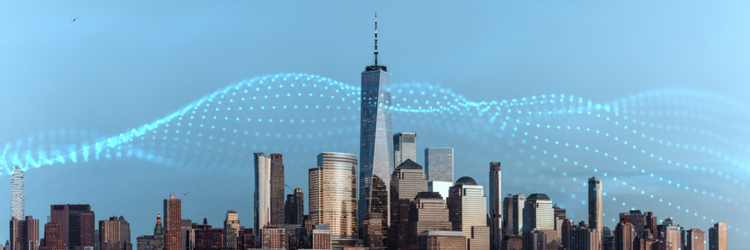What Is a Digital Twin for Smart Cities?
Smart cities are communities that use electronic means to gather and analyze data on their infrastructures, processes, and utility services, using the information for specific initiatives like sustainability or mobility improvements.
Smart cities are becoming increasingly popular as more and more municipalities look to utilize technology to improve efficiency and quality of life for their citizens. One promising area of development is the concept of the digital twin, a virtual replica of a city that engineers use to test design concepts or remedies before using them in the real world. According to ABI Research, more than 500 cities will adopt the use of digital twins by 2025.
But what exactly is a digital twin, and how can it be used to benefit smart cities? Read on to learn more about this exciting new trend in urban planning.
What A Digital Twin Is and How It Benefits Smart Cities
A digital twin is a representation of a physical system or item in digital form. Engineers and city planners can use them to track and monitor the status of physical objects or systems and simulate how they might respond to different conditions.
For example, a digital twin can track the performance of city infrastructure and services and simulate how the city might respond to changes. By using a digital twin, cities can test out different solutions before implementing them in the real world, which can help to save time and money.
Examples of How a Digital Twin Can Improve City Infrastructure
There are many potential applications for digital twins in smart cities. For example, a digital twin can track the performance of city infrastructure, such as roads, bridges, and buildings. By monitoring these assets’ condition, cities can ensure that they are being appropriately maintained and identify potential problems before they become serious.
Digital twins can also simulate how changes to city infrastructure might impact the overall system. For example, if a city is considering adding a new highway, a digital twin can predict the traffic patterns resulting from this change. Engineers can then use this information to make informed decisions about when, where, and how to build the highway.
Digital twins can also provide real-time views of city assets and resources, assisting emergency response teams as they respond to emergencies. They can help enable green resolutions, simulate the impact of air and noise pollution, or monitor the maintenance of open spaces.
Some cities have used digital twins to create circular food economies to reduce waste and ensure everyone’s access to healthy food, to reduce energy poverty, or to reduce the risk of suicide.
Advice On Getting Started with Developing a Digital Twin for Your City
Digital Twins require vast amounts of data and robust systems to use it. If you’re interested in developing a digital twin for your city, it’s best to start with an idea of what you want to plan. Finding a company to help create your twin, monitor and collate data, then ensure an understanding of the results is paramount. You can then enable your plan with educated choices to increase implementation efficiency and help ensure success.
Overall, digital twins offer a lot of potential for smart cities. They can track the performance of city infrastructure, simulate how the city might best adapt new initiatives, and even test new solutions before implementation.

